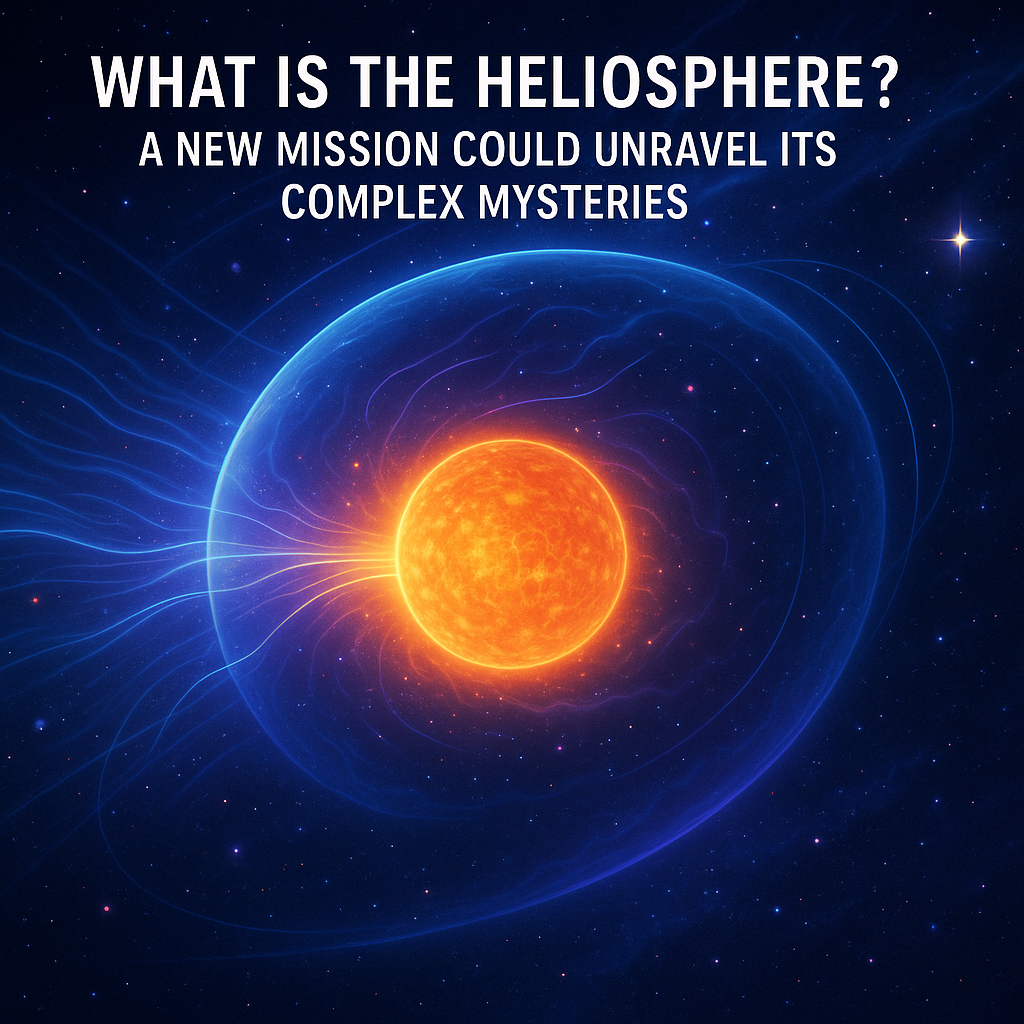The cosmos around us is far from empty. One of the more intriguing—and lesser known—structures in our own neighborhood is the heliosphere. A freshly launched mission might finally shed light on this invisible frontier and untangle some of its longstanding puzzles.
What Is the Heliosphere?
Picture the Sun as a lighthouse, emitting not just light, but a continuous stream of charged particles known as the solar wind. That wind pushes outward, carving a giant bubble into the surrounding space. That bubble is the heliosphere. In plasma physics terms, it’s the cavity formed by the Sun in the interstellar medium—a region where solar influence dominates over the galaxy’s background.
Inside the heliosphere, the solar wind carries the Sun’s magnetic field. Outside it, you find interstellar plasma, cosmic rays, galactic magnetic fields, and interstellar dust. The boundary layers between these domains are anything but simple. There’s a termination shock (where solar wind slows down abruptly), a heliosheath (a transition zone), and finally the heliopause (the border where solar wind pressure balances interstellar pressure).
The shape of the heliosphere is also not a perfect sphere. It’s often likened to a comet: a “nose” side facing into the interstellar medium, and an elongated heliotail stretching behind.
Voyager 1 crossed the heliopause in 2012; Voyager 2 followed in 2018. Their data gave us rare, direct glimpses of what lies beyond.
Why the Heliosphere Matters
The heliosphere acts as a shield. It helps protect the planets in our solar system from a significant portion of harmful galactic cosmic rays and energetic particles. Without it, Earth would be much more exposed to high-energy radiation.
But here’s where things get exciting: despite decades of study, we still don’t fully understand how this structure changes over time, how porous it might be, or how it responds to both solar activity and interstellar conditions. A new mission is about to push those limits.
A New Mission Poised to Break Ground
The Interstellar Mapping and Acceleration Probe (IMAP) is NASA’s next step toward decoding the heliosphere. Launched recently, IMAP carries ten sophisticated instruments focused on mapping how solar wind particles interact with the surrounding interstellar medium.
One of its key roles is to track energetic neutral atoms (ENAs). These start as charged particles but lose their charge after colliding with interstellar atoms, then travel in straight lines—unhindered by magnetic fields. By detecting ENAs, IMAP can illuminate invisible boundaries and structures deep in space.
IMAP is deployed near the L1 Lagrange point, about 1.5 million kilometers from Earth, which gives it an unobstructed vantage of incoming solar wind and its interface with interstellar space.
Compared to earlier missions, IMAP promises much higher resolution imaging—reportedly 30 times better—of how the heliosphere is shaped and how it fluctuates with solar cycles and cosmic influences.
What Mysteries Might IMAP Solve?
- Boundary structure and variability — Is the heliopause smooth or patchy? How does it wiggle over time?
- Particle acceleration — How do solar wind particles gain energy near the edges?
- Cosmic ray filtering — Exactly how effective is the heliosphere in keeping harmful particles out?
- Interstellar dust and gas flows — How do external gases or dust intrude or move around within the bubble?
- Connections to other stars — Does our heliosphere behave like those around other stars (astrospheres)?
A mission like IMAP gives us a chance to overlay models with real measurements and refine them. It could change how we think about the Sun’s sphere of influence and how we protect spacecraft, satellites, and human missions from space weather.
A Bridge Between Science and Exploration
Understanding the heliosphere is not just atmospheric science for astrophysicists—it has practical stakes. Cosmic rays and solar storms can damage satellites, disrupt communications, pose risks to astronauts, and interfere with technology on Earth. By refining our models, IMAP’s data could lead to better forecasts, safer space travel, and more resilient systems.
In a broader sense, uncovering the true nature of the heliosphere helps us frame our place in the galaxy. How does our solar bubble compare with those of other stars? Can similar protective bubbles be observed, and what do they tell us about habitability and cosmic environments?
How to Watch This Unfold
IMAP’s mission will unfold over years. Scientists will analyze streams of data, cross-check with observations from Voyager and other heliophysics missions, and test evolving models of how the heliosphere behaves. Stay tuned to NASA’s heliophysics portals, research journals, and space news outlets.
We’re at a moment where theory and measurement may finally converge. The Sun’s bubble, once hidden in abstraction, may start to reveal its true form—and with it, a richer understanding of how our solar system plugs into the galaxy at large.


